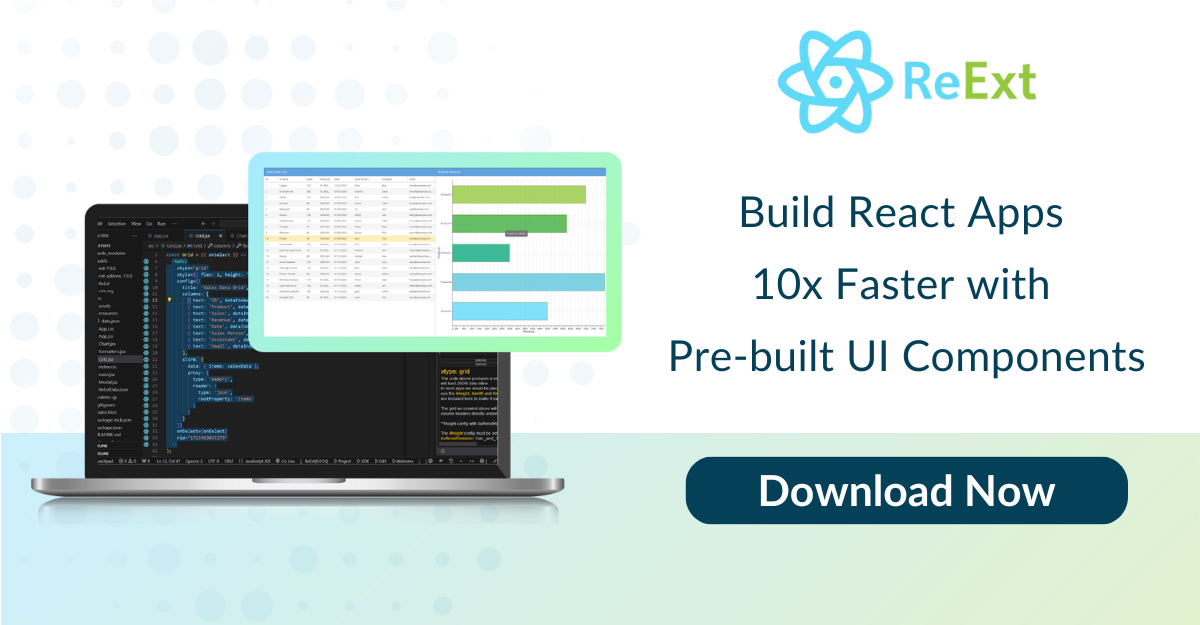Application Development: React VS React Native
There has been a massive growth in application development today. Facebook’s technologies, React and React Native, are excellent solutions. They help create user interfaces and applications with great ease.
React is intended for web applications in general. React Native, on the other hand, is used for creating cross-platform mobile apps. It is essentially a mobile solution. Designers and development teams use it to develop better solutions.
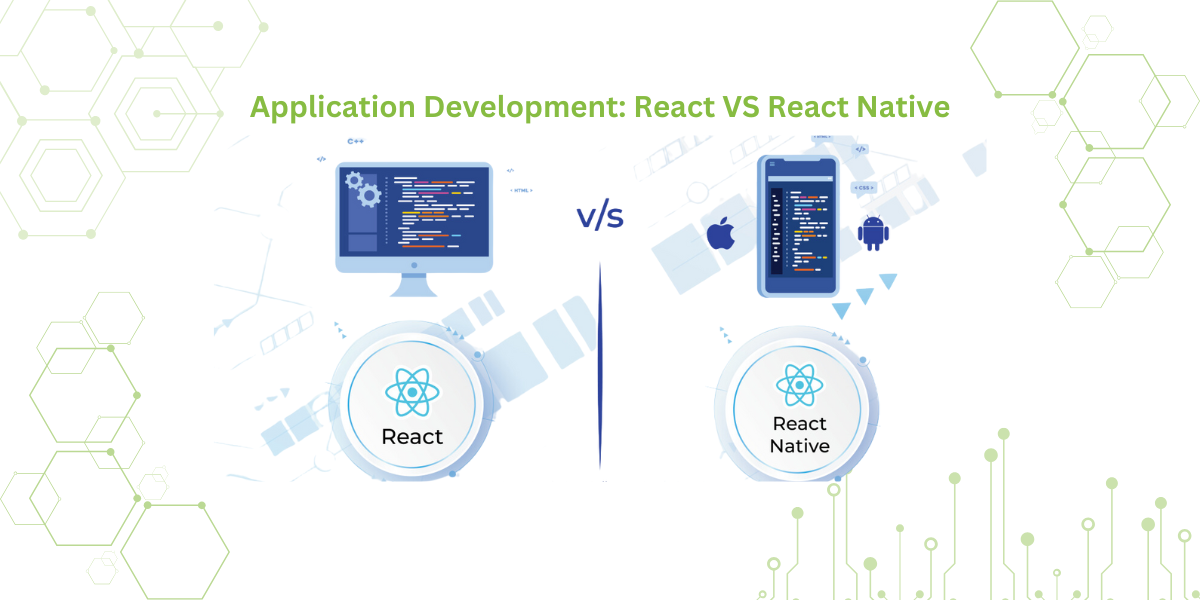
These tools are crucial for projects. They help in selecting the right tool for specific use. React provides a powerful toolkit for web development. It allows developers to build complex structures with ease.
React Native stands out for its cost-effective development. It optimizes resource allocation and lowers delivery time for mobile applications.
In this article, I will compare React and React Native. I will discuss the features and advantages of both technologies. Their practical applications will also be explored. Let’s get started and see how React and React Native can improve your development journey.
Also Read: Rapid Ext JS: The Ultimate Tool for Speeding Up Your Front-End Development
React Native vs ReactJS: How Do They Work?
ReactJS and React Native are frameworks developed by Facebook. They have the same origin but serve different purposes. ReactJS is used for building web-based applications. React Native, on the other hand, is used for creating mobile applications. Let’s explore how they function.
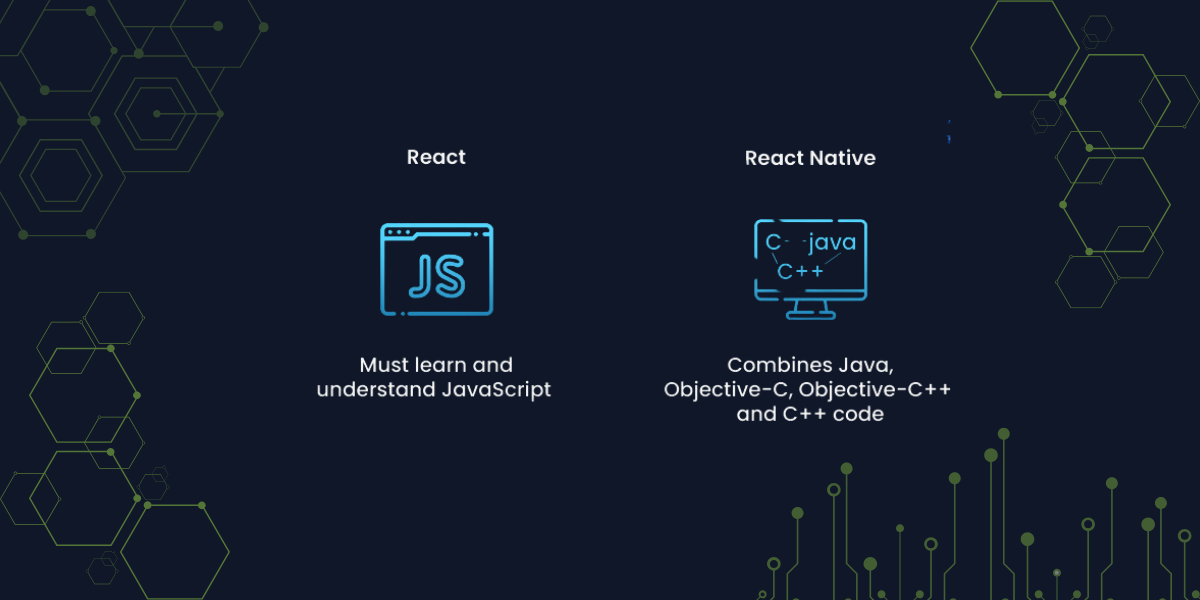
Virtual DOM for ReactJS
Document Object Model (DOM) is the interface representation of a web page’s structure and content. Efficient handling of the DOM enhances user experience and performance. ReactJS uses the Virtual DOM, which is revolutionary.
The Virtual DOM is a lightweight version of the actual DOM. It stores updates in memory before modifying the real DOM. Changes are compared between the updated Virtual DOM and the previous version. This process is called “diffing.”
Only the affected parts of the real DOM are updated. This method is faster, more efficient, and improves user experience. Dynamic UIs result in smoother interactions and better performance.
Also Read: 10 Best React UI Component Libraries in 2025
Native APIs for React Native
React Native is specifically designed for mobile applications. It focuses solely on mobile app development. Native APIs are used for creating applications on both operating systems. For Android, Java APIs are used to render components. For iOS, Objective-C APIs are employed.
The logic and structure of the app are written in JavaScript. Developers can use native APIs to access platform-specific capabilities. This approach allows React Native to use different components for different platforms. It saves time and effort in development.
Unlike ReactJS, React Native does not use HTML or CSS. Styles are written in JavaScript. These styles resemble CSS but function differently.
React Native replaces some components used in ReactJS. For example, < div> is replaced with < view>. Similarly, < p> is replaced with < text>.
Code Examples: ReactJS vs React Native
Here is an example to compare how they work:
ReactJS Example:
function tick() {
const element = (
< div>
< p>Hello World< /p>
< /div>
);
ReactDom.render(element, document.getElementById('root'));
}
setInterval(tick, 1000);React Native Example:
import React, { Component } from 'react';
import { Text, View } from 'react-native';
export default class HelloWorldApp extends Component {
render() {
return (
< View>
< Text>Hello World< /Text>
< /View>
);
}
}Running React Native Applications
To execute a React Native app, specific tools are required. For Android, Android Studio is necessary. For iOS, Xcode must be installed. These tools allow developers to choose the execution method. Apps can be run on simulators or real devices. This flexibility simplifies testing.
ReactJS and React Native serve different purposes. ReactJS uses the Virtual DOM to create fast and fluid web UIs. React Native leverages native APIs to build cross-platform mobile applications. Both frameworks are highly effective. Each offers unique advantages for its platform.
What Is React?
React is an open-source JavaScript library, not a framework, as some might say, to create single-page web apps. A framework and library is a collection of previously created, reusable code. However, they have significant differences.
Developers may easily construct dynamic user interfaces with ReactJS. You may be certain that your visitors will see each state of your application by just using ReactJS. ReactJS is one of the few solutions that can update and render components as your data changes.
Additionally, ReactJS provides developers with a clear view, making it simpler for you to construct your code and more consistent and straightforward to debug.
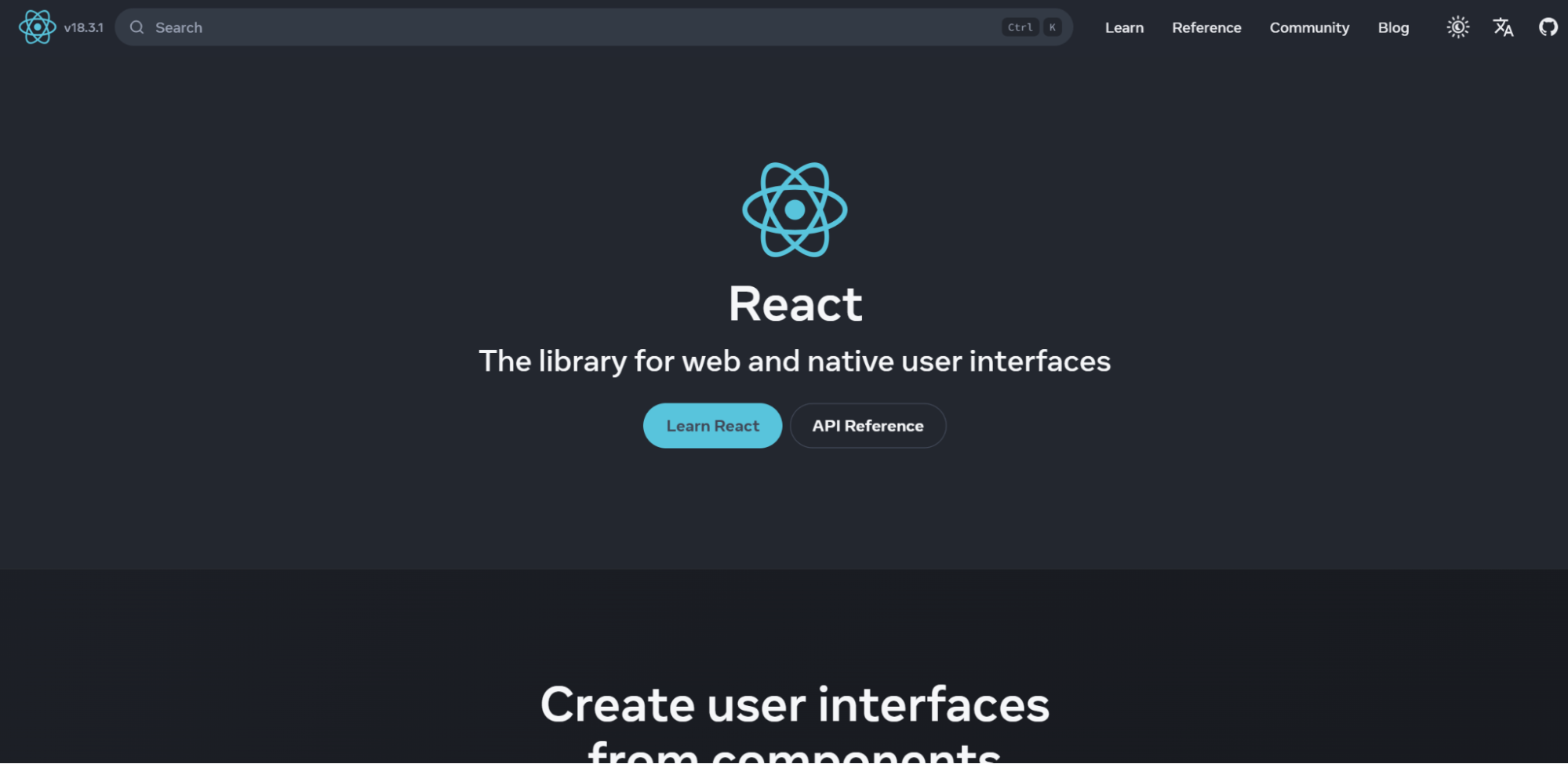
Why React?
The key characteristics for creating applications with React are listed below.
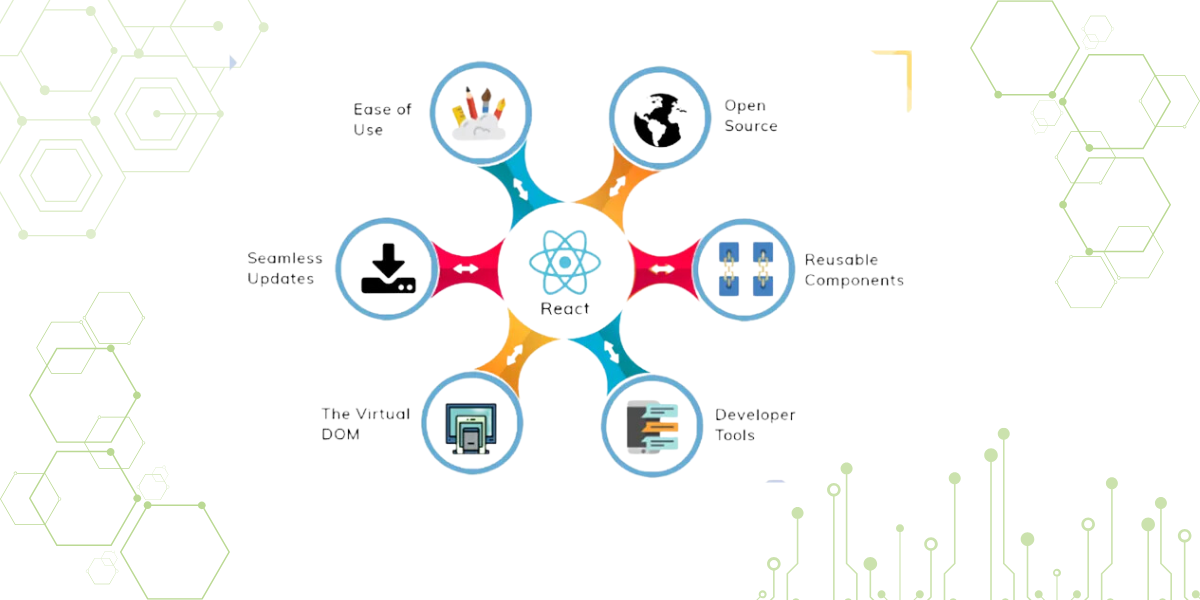
Faster Loading
The changes while developing are computed by React in an in-memory data structure cache, which updates the browser’s visible DOM. But actually, only the sub-components that are updated are rendered. Yet, the programmer implements the code as though the full site is rendered on every update.
User Friendly
In today’s world, an application’s user interface is critical. A poorly made user interface decreases a software’s likelihood of success. The best part is that React’s declarative components make it possible to create high-quality, rich user experiences.
Stability
React monitors descending data flow to prevent changes in the child structure from having an impact on the parent structure. To alter an object, a developer merely needs to change its state and make the necessary adjustments. Only one component will update in this manner. As a result, the application runs more smoothly, and the data flow and structure improve code stability.
Component-Based Reusability
The component-based design turns each component of a broader UI into a standalone, self-sufficient micro-system.
Efficiency
React is popular because of its layout, syntax, and other features that assist with efficient development. Reusing functionality, for instance, may save a ton of work and allow developers to concentrate on adding new features or growing the program.
Each component has its internal logic, which makes it simple to design and modify them. In addition, a large collection of components offers the developer access to pre-made, frequently used solutions.
You can also more easily make modifications that won’t affect how the entire program works, thanks to the modular code. This has significant benefits for the process of maintaining and upgrading applications in the future.
Easy SEO Optimization
Your web apps’ SEO will increase as a result of how your web pages are rendered from the server to the browser.
When search engines can’t properly render your content, React uses pre-rendering. Pre-renderers are special programs that monitor requests to your website and, if the request is from a bot, a cached HTML version of your site in these is sent. The typical web page loads if the request originates from a user.
What Is React Native?
React Native is a JavaScript-based framework for creating mobile applications as native apps. It enables you to use reused code components to create affordable, cross-platform mobile applications.
It serves as React’s unique renderer as well. React Native compiles the JavaScript code to native components, thus, using platform-specific APIs and modules which make’s it faster than a hybrid web app.
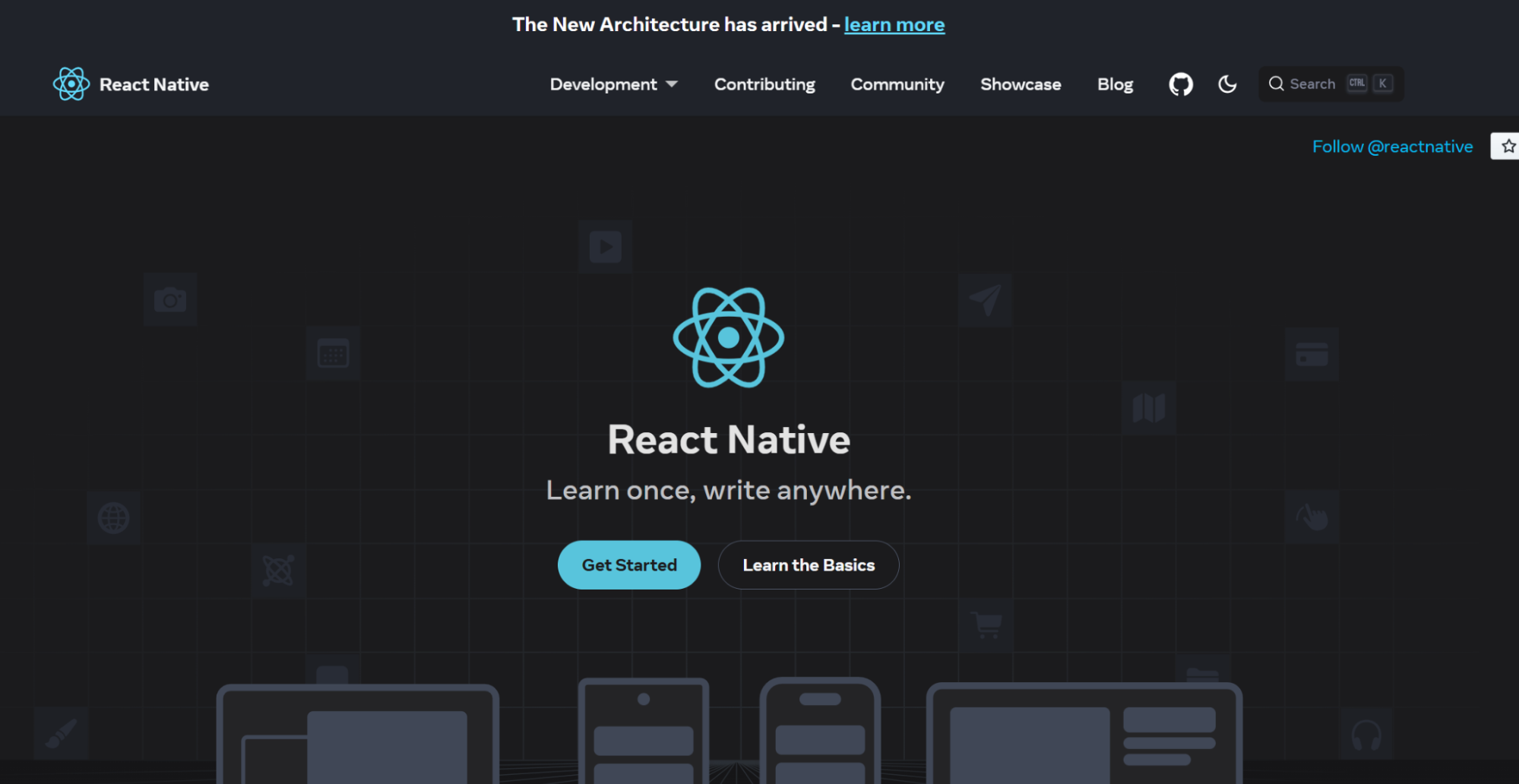
Why React Native?
Easy To Integrate
Developers may easily include components created with React Native into native applications. To cut expenses, certain views of an app may be created using React Native and then integrated into a native app that already exists, while other views are still native. The UX and UI of mobile apps may be the same on both iOS and Android thanks to React Native, which also offers a high degree of consistency across the two platforms.
Flexible
React Native can create platform-specific code. The frameworks help determine the platform on which an app is running when you use it to develop one. By doing this, it creates the appropriate code for the appropriate platform.
JavaScript Compatible
It becomes simpler for a front-end developer to easily design an app, because the majority of the code in React Native is JavaScript. A front-end developer just has to be familiar with JavaScript, platform APIs, a few native UI components, or any platform-specific design concepts to understand the technology.
Interactive
About 30,000 libraries that enable React Native are in their repository. The fact that several other libraries are accessible does not necessarily imply they are of high quality, but we must concede that this considerably increases the framework’s potential and shows the community’s dedication to enhancing framework efficiency. Moreover, React Native has a wide range of additional tools that make it easier to do many common activities, including bug fixes, automated testing, and app store release.
Cross-Platform
It is quick to develop a cross-platform app. Within a few weeks, React Native app developers may complete the development of one app and publish a second. Its compatibility for over-the-air updates in React Native is a huge plus. You may make modifications to the program with the aid of this update without having to ask the present users to download or upgrade it.
Comparison Between React vs React Native
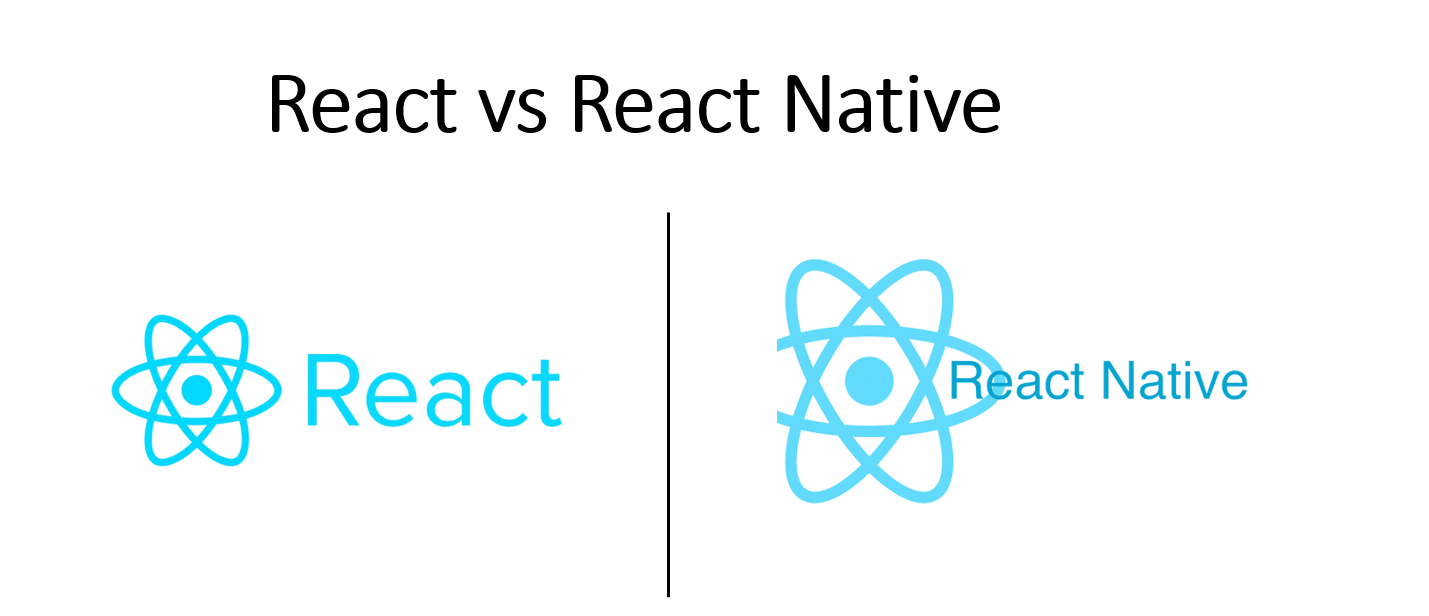
ReactJS and React Native are both developed by Facebook. They share similarities but serve different purposes. ReactJS is a JavaScript library for web development, while React Native is a framework for mobile apps. Below are the key differences between them.
Installation Process
ReactJS has a simple installation process. You only need to include the React library in your HTML file using a < script> tag. For example:
< script src="https://unpkg.com/react@16/umd/react.development.js" crossorigin>< /script>
< script src="https://unpkg.com/react-dom@16/umd/react-dom.development.js" crossorigin>< /script>Both ReactJS and React Native are great frameworks for developers. But each has a different function. ReactJS is best for building web applications. It is dynamic and SEO-friendly. It supports reusable components. It is ideal for creating interactive UI elements.
React Native is best for mobile app development. It allows developers to create cross-platform apps. These apps mimic native performance. Its code reusability saves time and resources. It supports native API integration for added functionality.
The project requirements dictate which tool to use. Both tools are responsive and flexible. They enable developers to design high-quality applications. These applications are seamless and efficient.
For large projects, bundlers like Webpack or Rollup are used. These tools combine files into one. This simplifies the development process. Tools like Create React App or Next.js handle much of the configuration. This further eases development.
React Native requires more complex configurations. Tools like Node.js and React Native CLI are needed. Android Studio is required for Android, while Xcode is needed for iOS. Once the setup is complete, projects can be created using the CLI. These projects can then run on emulators or real devices.
Efficiency
ReactJS is excellent for dynamic web interfaces. It offers server-side rendering for better performance. Reusable components save time and effort. Developers can reconstruct components easily.
React Native focuses on mobile development. It uses reusable native components rendered in platform-specific code. This ensures apps look and function like native applications. Developers can use native languages like Java or Swift for customization.
Technology Base
ReactJS is a JavaScript-based library. Learning JavaScript and reading the documentation is sufficient to start. It is designed for building UIs for web applications.
React Native combines JavaScript with other languages. These include Java, Objective-C, and C++. Developers need to learn these languages to fully utilize React Native.
Feasibility
React combines HTML and JavaScript. This simplifies UI development. It also solves CSS issues with built-in component styles.
React Native allows incremental adoption. It does not require rewriting the entire app. It integrates with frameworks like Ionic and Cordova. Developers can reuse existing hybrid app code with plugins.
Compatibility
ReactJS uses server-side rendering for SEO. This optimizes pages for search engines.
React Native focuses on mobile UI development. It does not address SEO. However, it creates fast and responsive applications.
Syntax
ReactJS uses JSX, which is similar to HTML. Developers can create components using functions or classes.
React Native uses native components instead of HTML-like tags. Examples include < View>, < Text>, and < Image>. It is ideal for mobile but not web development.
Components
ReactJS has functional and class components. Functional components are simpler. Class components offer more functionality.
React Native relies on native components and modules. These are platform-specific and customizable.
Navigation
ReactJS uses libraries like react-router for navigation. Features like useHistory assist in routing.
React Native uses Navigator and React Native Navigation. These libraries handle screen transitions on Android and iOS.
Storage
ReactJS uses local storage. It persists data even if the browser is closed.
React Native uses AsyncStorage for data storage. It uses SQLite or RocksDB for Android. For iOS, it utilizes native storage formats.
Search Engine Friendliness
ReactJS is SEO-friendly. It offers tools to improve web application optimization.
React Native is not designed for SEO. It focuses on creating responsive and visually appealing mobile apps.
ReactJS is best for creating dynamic, SEO-friendly web UIs. React Native is ideal for developing high-performance mobile apps. Both tools serve different purposes effectively.
What is Sencha ReExt, and How Does It Compare to React?
Sencha ReExt expands the possibilities of modern applications and web development. It primarily targets business structures and organizations. Built on Ext JS technology, Sencha ReExt enables perfect integration of Ext JS components in React applications. This allows for harmonizing React’s flexibility with Ext JS’s efficient UI features. This framework is particularly useful for building data-heavy applications.
Another framework for creating interfaces is React. It primarily supports single-page applications. React follows a component-based paradigm. Components are reusable and automatically refresh when data is updated. React is straightforward and has a vast ecosystem.
Comparison
Approach
The component-based approach focuses on a controlled and structured design. Simplicity and reactivity are key priorities. With Sencha ReExt, you can use the impressive UI components of Ext JS. These are combined with React’s declarative UI design.
UI Components
Ext JS includes many components out of the box. These include grids, charts, and forms. React does not come with fully-featured components. Developers usually need to build or fetch advanced components from third-party libraries.
Learning Curve
React is fairly straightforward to work with. Its design is simple. Sencha ReExt might seem challenging at first. It requires getting used to because of Ext JS’s complexity.
Community & Ecosystem
React has a large community. It has many developer tools and resources. Sencha ReExt has a smaller community. It has fewer active users, which limits its use in larger companies.
Final Thoughts
Both ReactJS and React Native are great frameworks for developers. But each has a different function. ReactJS is best for building web applications. It is dynamic and SEO-friendly. It supports reusable components. It is ideal for creating interactive UI elements.
React Native is best for mobile app development. It allows developers to create cross-platform apps. These apps mimic native performance. Its code reusability saves time and resources. It supports native API integration for added functionality.
The project requirements dictate which tool to use. Both tools are responsive and flexible. They enable developers to design high-quality applications. These applications are seamless and efficient.
FAQs
What is Sencha ReExt?
Sencha ReExt is a framework built on Ext JS. It lets you integrate Ext JS components into React applications. It is great for building data-heavy, enterprise-grade web apps.
How does Sencha ReExt compare to React?
Sencha ReExt combines React’s flexibility with Ext JS’s powerful UI components. It is ideal for complex, data-intensive applications. React focuses on building simple, reusable UI components for single-page apps.
Is Sencha ReExt difficult to learn?
Sencha ReExt can take time to learn. It relies on Ext JS, so it may be harder if you are already familiar with React. However, it offers rich functionality for enterprise apps.
When should I use Sencha ReExt instead of React?
Use Sencha ReExt for complex, data-heavy enterprise apps. It is ideal when you need advanced UI components like grids, charts, and forms that React alone may not offer.
Sign Up at Sencha to build scalable and efficient application using React and Ext JS.

Pavel Perminov, the solo founder and developer of Indi Engine AI, for an insightful session…

Data-rich applications often present users with powerful but complex data grids. While traditional filtering and…

Modern web users expect pixel-perfect interfaces and enterprise-grade performance—delivered yesterday. Yet most teams still spend…




